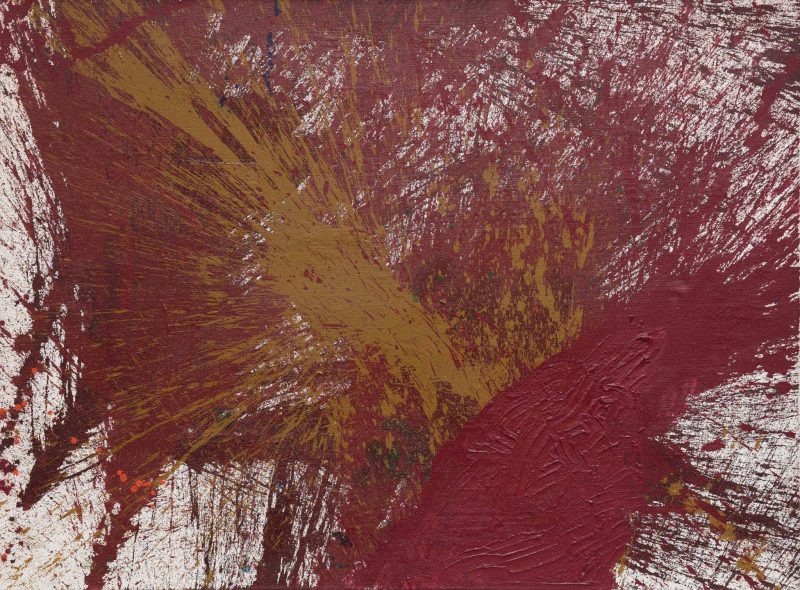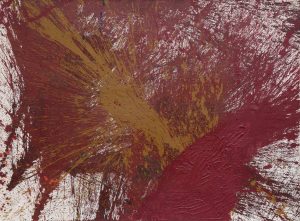1938 Vienna – 2022 Mistelbach/Lower Austria
- Title
- Splatter Painting
- Time
- 2005
- signed
- verso “hermann nitsch 05”, verso archive number “(4)8/SREDI/05”
- Technique
- acrylic on burlap
- Measurements
- 59×78 ¾ in
illustrated in: Hermann Nitsch. Retrospettiva (exhibition cat. Marina di Ravenna, July 7 – Aug. 30, 2007), Ravenna 2007, p. 38.
The act of painting as a celebration of vitality, an orgy, a bacchanal, a pleasantly uninhibited frenzy, freed from the shackles of modern civilization, undamped and direct. Hermann Nitsch has written art history with his progressive splatter paintings.
Nitsch was fascinated by religion, the ritual and the ceremonial, and the primitive, primeval roots of religious practice. Another one of his passions was philosophy, especially the works of Schopenhauer, Heidegger and Nietzsche. His interest in Sigmund Freud‘s psychoanalysis and the theory of the unconscious combined with his enthusiasm for the impulsiveness of Art Informel.
As significant as these numerous influences were for Hermann Nitsch‘s innovative and multi-layered oeuvre, one term towered above all others: ”intensity“. His art, as Nitsch never tired of emphasizing, always had to live up to the demands of intensity. This is also why he chose the color red – no other color triggers such strong reactions; red gets our instinctive attention. With his splatter paintings, Hermann Nitsch took the techniques of action painting to the extreme. Even more than Jackson Pollock‘s drip-painting process, Nitsch‘s actionist painting process is about relinquishing control in favor of an almost fateful event, comparable to the thrown knuckles of an ancient oracle. The picture surface shows ”exemplarily the visual grammar of the Theater of Orgies and Mysteries“. The powerful act of pouring was followed by the artist‘s direct, gestural intervention: Nitsch finalized the painting with his bare hands, with which he spread the generously applied, dripping and running paint. The resulting groove-like traces of his fingers are an essential design tool and lend structure to the paint; at the same time, it is an uncommonly direct, almost archaic form of signature.
Hermann Nitsch, born in Vienna in 1938, was long considered the ”enfant terrible“ of the Austrian art scene. Today, his important role as the initiator of Viennese Actionism – together with Günter Brus, Otto Mühl and Rudolf Schwarzkogler – is undisputed in the international art scene.


